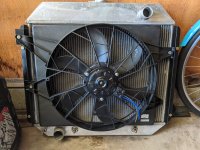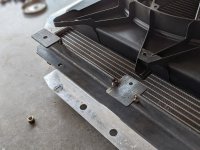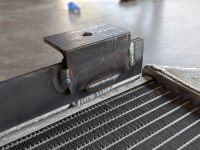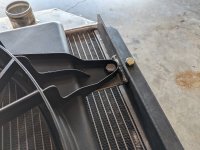realsquash
Well-known member
Location and ambient temps have a big effect of radiator and fan needs. What works for rock bouncers and technical crawling with light weight buggies doesn’t work for continuous throttle KOH racing on a hot year. Radiator location also has big effect, catching air flow at speed vs a radiator down low with fan only air flow.
Believe it or not, ambient air temp over the 32-100F range has little effect on a radiator's efficiency. Like maybe 5% over that range. Getting natural air flow through the rad is useful for sure, but not because of ambient air temp.
 Been working for years
Been working for years


